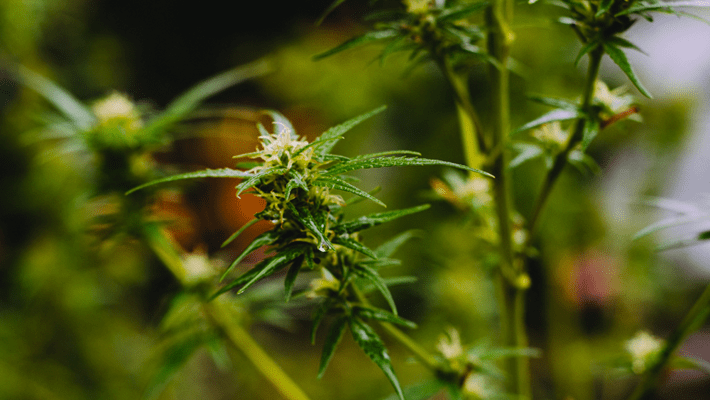
Cannabis Terpenes: Can Humelene Help With Cancer Treatment?
Published on 4/22/21
The smell of cannabis is unmistakable. Regardless of whether it is being smoked or if it is fresh, marijuana normally emits strong scents like pine, citrus, skunk or diesel. The compounds that produce those odors are called terpenes, and they are present across the world of flora. They serve important purposes for all types of plants and they are beginning to attract scientists who are encouraged by mounting evidence that humans can also benefit physically from the smelly substances. For example, one of the most common terpenes in cannabis, limonene, is also found in plants like pine, rosemary, mint and in the peels of citrus fruits. And it also has shown to fight ailments like colitis and acute bronchitis. Other terpenes can augment brain function and reduce stress, inflammation, nausea and insomnia.
What are Terpenes?
 Unsplash
UnsplashTerpenes are organic compounds that make up the essential oils that are produced in plants. Since they are volatile aromatic molecules, evaporate easily and produce vibrant smells that simultaneously attract pollinators while protecting plants from predators. In addition to giving cannabis strains with their particular smells, they are also used by many industries to provide fragrance for essential oils, beauty products, perfumes and cleaning agents.
A scientific terpenes definition would be any various isomeric hydrocarbons found present in essential oils (as from conifers), resins and balsams, that is used especially as solvents and in organic synthesis.
Terpenes Benefits
When humans ingest the terpenes found in marijuana, they bind to receptors throughout the brain and body. At the same time, they also interact with the other dozens of cannabinoids in weed to affect the endocannabinoid system (neurotransmitters and cannabinoid receptors found in the nervous system) to produce what scientists call the entourage effect. The entourage effect is what occurs when the various compounds in cannabis work together to positively alter how the body and mind operate. The terpenes speed up the uptake of cannabinoids into the body's bloodstream and change the way cannabinoids interact with receptors in the body. Studies indicate the terpene pinene can mitigate some of the memory loss that results from THC consumption and that anxiety can be reduced when myrcene, pinene and caryophyllene are consumed at one time.
Over 100 different terpenes have been detected in cannabis. A list of terpenes that are most prominent includes aromadendrene, bergamotene, bisabolene, borneol, carene, elemene, eucalyptol, farnesene, fenchol, linalool, phellandrene, phytol, pulegone and terpineol.
The Humulene Terpene
 Unsplash
UnsplashA study on the chemistry of hop aroma in beer published in 1981 is the first reference to this dynamic terpene. The name, humulus lupulus, derives the name and noble hops can contain up to 40% of the terpene. Humulene is primarily responsible for the citrus and pine smells and tastes that can be enjoyed in both cannabis and beer. Humulene also presents with an earthy aroma with hints of spice and pepper. In addition to hops, it can be found in sage, tobacco, basil, ginseng, ginger and certain varieties of wood.
Humulene effects have been studied to some extent over the past 15 years and usually focus on the anti-inflammatory. These effects create conditions that can assist with ailments like arthritis and chronic pain. Humulene can also work in a similar manner as an antihistamine to relax nasal passages that become inflamed due to allergies. It can also help the body fight tumors and cancer cells. The terpene inhibits the growth of tumors by producing chemicals known as reactive oxygen species. These incredible chemicals actually help the body destroy cancer cells. Remarkably, rats that received systematic treatment of humulene in a 2007 study had tumor growth prevented. As a terpene with intense anti-inflammatory and analgesic properties, it deserves more study in order to move forward with using it as an effective treatment for cancer in humans.
Strains with High Levels of Humulene
Luckily for cannabis lovers looking for the benefits of humulene, it is not hard to find. Several classic strains have high levels of this terpene and are readily available at dispensaries where medical and/or recreational marijuana is legal.
Dark Star
An indica-dominant strain bred from Purple Kush and Mazar-I-Sharif that packs a sedative punch with a calming high. Dark Star can reach THC levels of 19%.
Girl Scout Cookies
This uber-popular hybrid strain has an excellent flavor and provides a euphoric and uplifting high. With a 60/40 indica vs. sativa ratio, Girl Scout Cookies is a great combination of the two. THC levels can reach 25% or more - so GSC should be only consumed by veteran cannabis smokers.
Super Lemon Haze
Another legendary strain that gives users a racy high thanks to its sativa-dominant lineage. The citrus aroma is intense, as are the strain's bright-green flowers. The taste is just as you would expect - with citrus notes and a nice tang. Super Lemon Haze average at 18%, making Super Lemon Haze the perfect combination of potency and effects.
Headband
This strong cross of Sour Diesel, Master Kush and OG Kush presents strong notes of lemon and vanilla. With a THC average of 19%, Headband is not too strong but should be smoked wisely. Prepare to get spacy and hungry when enjoying Headband.
White Widow
Famous around the globe for years, White Widow is classic. A sweet citrus taste dominates, but earthy tones and notes of pine are also present. A couch lock with cerebral effects that ease stress come with this classic strain. White Widow can reach THC levels up to 20%, and should be smoked carefully.
Have you tried any strains strong with humulene? What did you think? Let us know in the comments below?
